Zenan Wang
SparseSSP: 3D Subcellular Structure Prediction from Sparse-View Transmitted Light Images
Jul 03, 2024



Abstract:Traditional fluorescence staining is phototoxic to live cells, slow, and expensive; thus, the subcellular structure prediction (SSP) from transmitted light (TL) images is emerging as a label-free, faster, low-cost alternative. However, existing approaches utilize 3D networks for one-to-one voxel level dense prediction, which necessitates a frequent and time-consuming Z-axis imaging process. Moreover, 3D convolutions inevitably lead to significant computation and GPU memory overhead. Therefore, we propose an efficient framework, SparseSSP, predicting fluorescent intensities within the target voxel grid in an efficient paradigm instead of relying entirely on 3D topologies. In particular, SparseSSP makes two pivotal improvements to prior works. First, SparseSSP introduces a one-to-many voxel mapping paradigm, which permits the sparse TL slices to reconstruct the subcellular structure. Secondly, we propose a hybrid dimensions topology, which folds the Z-axis information into channel features, enabling the 2D network layers to tackle SSP under low computational cost. We conduct extensive experiments to validate the effectiveness and advantages of SparseSSP on diverse sparse imaging ratios, and our approach achieves a leading performance compared to pure 3D topologies. SparseSSP reduces imaging frequencies compared to previous dense-view SSP (i.e., the number of imaging is reduced up to 87.5% at most), which is significant in visualizing rapid biological dynamics on low-cost devices and samples.
Adaptive Experimentation with Delayed Binary Feedback
Feb 02, 2022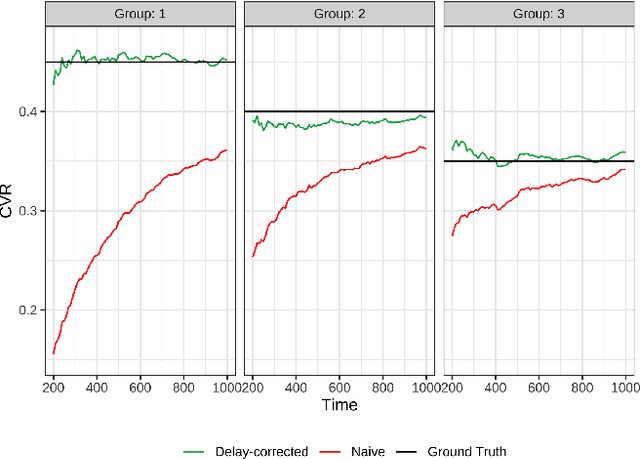
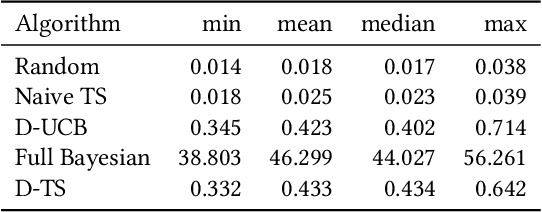
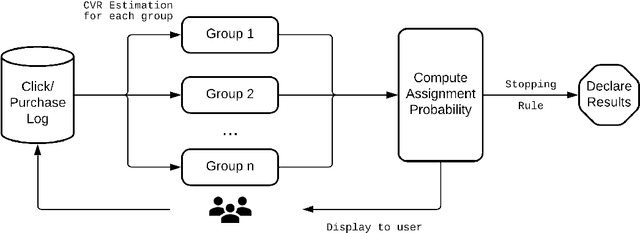
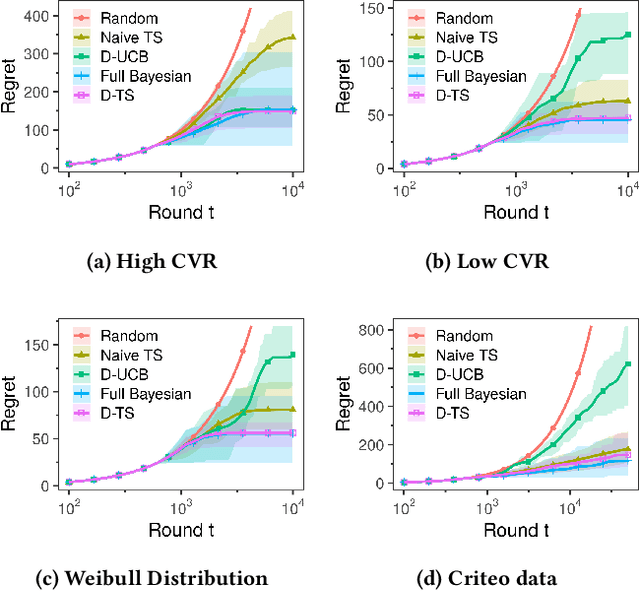
Abstract:Conducting experiments with objectives that take significant delays to materialize (e.g. conversions, add-to-cart events, etc.) is challenging. Although the classical "split sample testing" is still valid for the delayed feedback, the experiment will take longer to complete, which also means spending more resources on worse-performing strategies due to their fixed allocation schedules. Alternatively, adaptive approaches such as "multi-armed bandits" are able to effectively reduce the cost of experimentation. But these methods generally cannot handle delayed objectives directly out of the box. This paper presents an adaptive experimentation solution tailored for delayed binary feedback objectives by estimating the real underlying objectives before they materialize and dynamically allocating variants based on the estimates. Experiments show that the proposed method is more efficient for delayed feedback compared to various other approaches and is robust in different settings. In addition, we describe an experimentation product powered by this algorithm. This product is currently deployed in the online experimentation platform of JD.com, a large e-commerce company and a publisher of digital ads.
Blending Advertising with Organic Content in E-Commerce: A Virtual Bids Optimization Approach
May 28, 2021
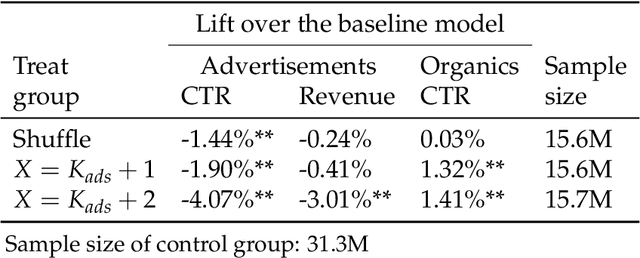
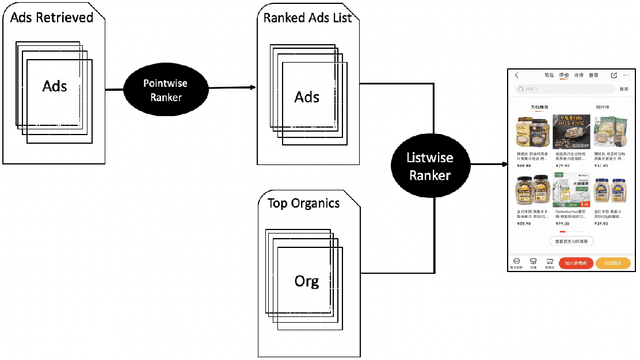
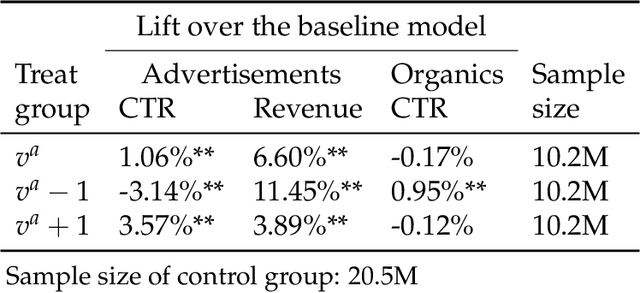
Abstract:In e-commerce platforms, sponsored and non-sponsored content are jointly displayed to users and both may interactively influence their engagement behavior. The former content helps advertisers achieve their marketing goals and provides a stream of ad revenue to the platform. The latter content contributes to users' engagement with the platform, which is key to its long-term health. A burning issue for e-commerce platform design is how to blend advertising with content in a way that respects these interactions and balances these multiple business objectives. This paper describes a system developed for this purpose in the context of blending personalized sponsored content with non-sponsored content on the product detail pages of JD.COM, an e-commerce company. This system has three key features: (1) Optimization of multiple competing business objectives through a new virtual bids approach and the expressiveness of the latent, implicit valuation of the platform for the multiple objectives via these virtual bids. (2) Modeling of users' click behavior as a function of their characteristics, the individual characteristics of each sponsored content and the influence exerted by other sponsored and non-sponsored content displayed alongside through a deep learning approach; (3) Consideration of externalities in the allocation of ads, thereby making it directly compatible with a Vickrey-Clarke-Groves (VCG) auction scheme for the computation of payments in the presence of these externalities. The system is currently deployed and serving all traffic through JD.COM's mobile application. Experiments demonstrating the performance and advantages of the system are presented.
 Add to Chrome
Add to Chrome Add to Firefox
Add to Firefox Add to Edge
Add to Edge